| |
|
|
| |
A tricky week but ...
Thu 16th November, 2017
|
|
|
|
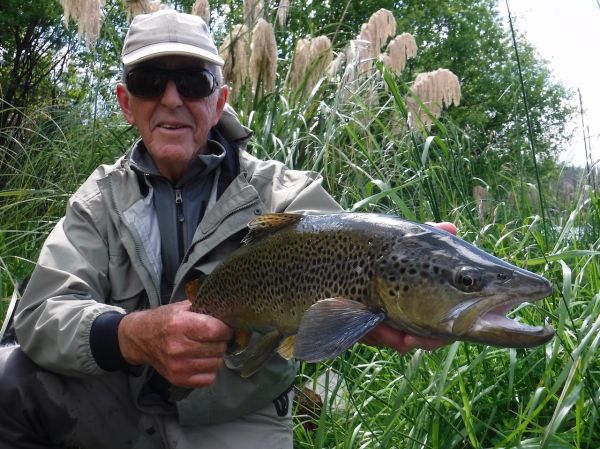 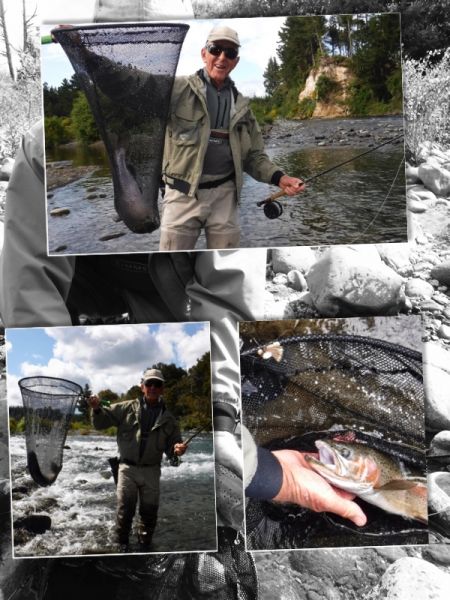 After a tricky start to the week the fishing has picked up again the last few days and things are ticking over nicely if you're prepared to move around a bit. After a tricky start to the week the fishing has picked up again the last few days and things are ticking over nicely if you're prepared to move around a bit.
Its that time of year again when the browns begin to figure more often in the reports and from now on you can expect to run into one whenever you're on the river.
Norman pictured above and Simon pictured below have both encountered them this week and I've spotted the odd brown from town right up as far as the Fan.
This first flush of "new season" browns are usually around the five pound mark and you'll often see them close to the bank or out of the main flow in shallow runs and riffles.
So its important to wade with care now.
Browns are well camouflaged and not easy to spot even in knee deep water. Wherever you are, take your time and spend a minute or so polaroiding the water if you intend to wade out.
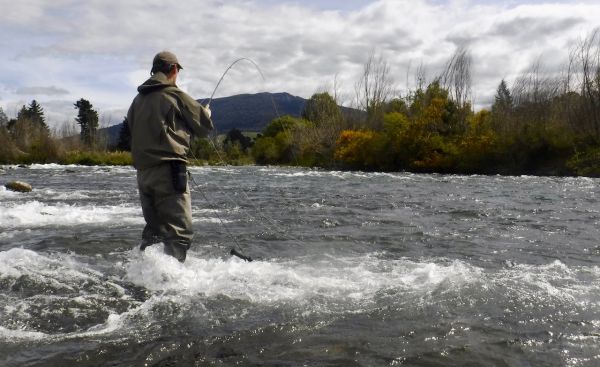 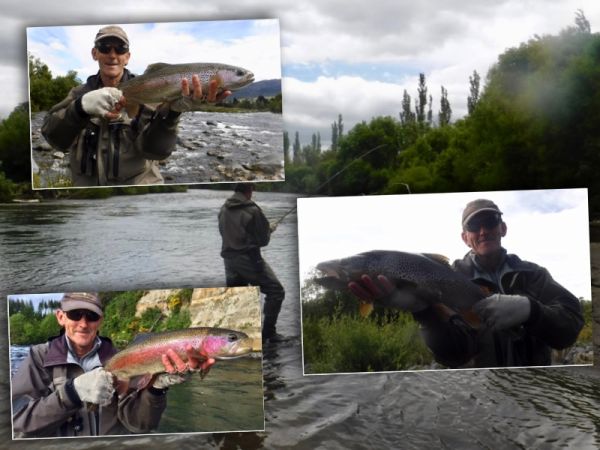 For most of the week anglers fishing the Tongariro have had to put up with a south easterly wind which has caused problems. For most of the week anglers fishing the Tongariro have had to put up with a south easterly wind which has caused problems.
Personally I don't mind windy days.
Don't get me wrong I'd prefer it not to be blowing a gale. But some days you have no other choice than to go with what you've got.
When the river's busy it can actually help because it does put anglers off. So, if you can learn to cope you'll often have stretches of river all to yourself when the wind blows.
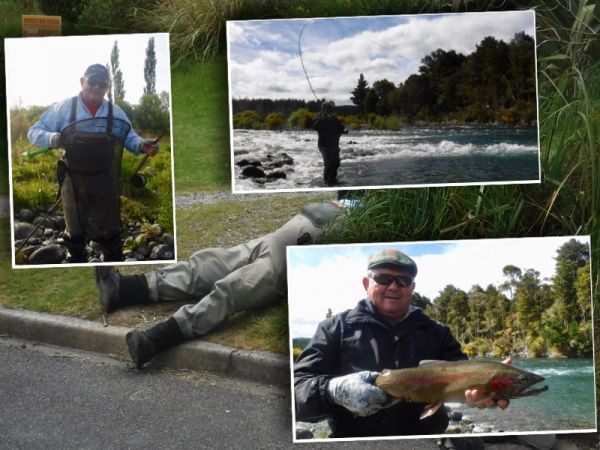
The extracts below are from an article by Brant Oswald at www.midcurrent.com. I first uploaded them a few years ago but its well worth repeating. Much of it is directed at anglers who fish the dry on smaller streams but there is also some very useful information with a broader application.
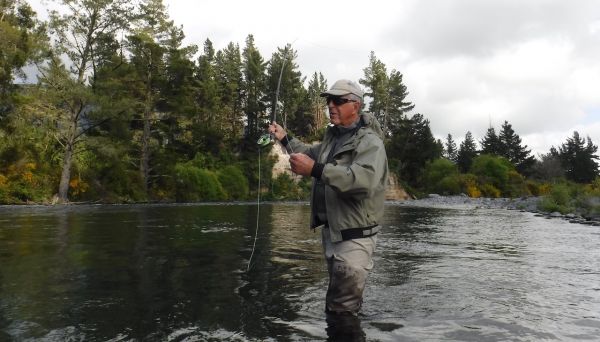
"The first problem with wind is that for most anglers even a light breeze destroys casting accuracy.
This is a particular problem in spring creek and tail-water situations because placement of the fly in a narrow feeding lane is crucial to success.
A further complication is the fact that drag may be caused not only by current acting on the leader and fly, but also by wind pushing the fly and tippet across these currents.
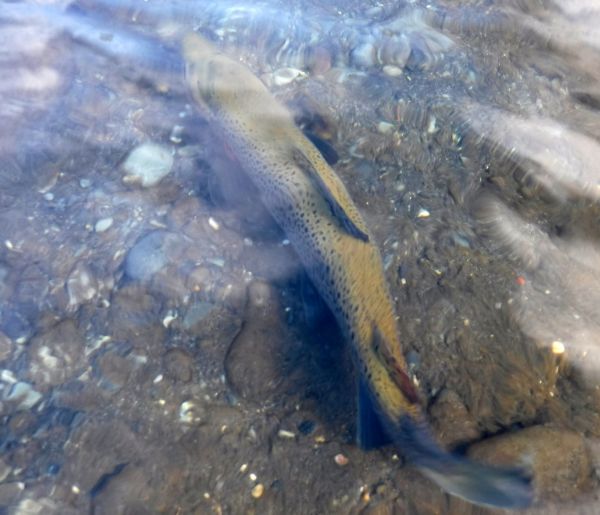
A wind ruffle on the surface of the water also makes fish much harder to see, even with the aid of polarized sunglasses. Even experienced spring creek anglers may find that they spook more fish because they don’t see them until the fish are scurrying for the cover of a weed bed.Almost under the rod tip.
Wind can also indicate other weather changes that have adverse effects on fishing.
Summer afternoon winds caused by temperature gradients can be annoying, but the fish are still willing to eat in these conditions if the angler can get the fly to the target.
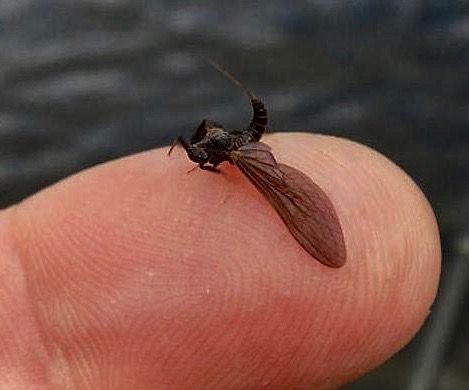
Winds caused by large scale barometric pressure changes as a storm front moves in can put a complete damper on the feeding activity of the fish. My experience is that wind also diminishes hatch activity, although it is not clear whether the insects are reacting to changes in air pressure or sudden changes in light intensity (from wind chop on the surface of the water).
It is not unusual to see the start of a good hatch and then watch the activity dissipate as the wind picks up. On the other hand, anglers should recognize that wind...in small doses...can be an ally. In extremely flat water, a breeze can produce a riffle where one didn’t exist before. The broken surface of the water in wind chop prevents the fish from getting a good a look at the fly or its drift, and although fish are harder to spot in these conditions, it is also harder for the fish to spot the angler.
If there is decent hatch activity in the wind, the fish grow accustomed to the hatching insects skittering across the surface, movement that is mimicked by the drag of a less than perfect drift. The fish also recognize that hatching bugs in these conditions are often ripped away from them quickly, so they may become more aggressive in their feeding habits, slashing at the insects (and your artificial fly) before it can get away. Caddis again.
Some of the problems created by wind can be alleviated by proper tackle selection. One strategy is to pack a heavier rod and line as a backup for use in windy conditions. The delivery of the heavier line is not a problem in wind chop, and most casters will find the extra line mass will help carry the fly accurately to the target.
Even though most anglers don’t carry a variety of floating lines for different conditions, some line designs are a handicap in the wind. Long front tapers often found on “spring creek” lines provide a more delicate presentation, but a line with a shorter front taper is a definite asset in transferring energy to the leader and getting the fly to the target when wind is a factor.
These notions of how wind affects fishing point toward several basic fishing strategies of casting and presentation. The first is to leave the dictum to “fish fine and far off” for calmer days. Since accuracy is at a premium, get as close as possible and let the wind hide your approach."
As I mentioned some of the above doesn't really apply on the Tongariro.
A lot of the time ...for instance in winter ... we have to use much "heavier" gear to get down to the fish.
In windy conditions when you're using bulky set-ups and multi-fly rigs the "water load" is invaluable. www.tongarirofishingguide.co.nz The force of the wind is always less just above the surface of the water and this simple cast will keep you fishing when others become frustrated and head home. It takes a little practice but its worth learning and before you know it wind won't be quite the pain in the arse it once was ... see what I did there. 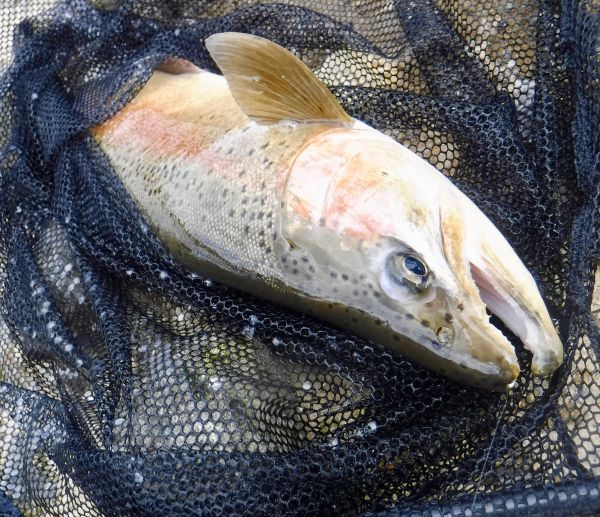
I've spent a lot of time upriver again and the buzz of chain-saws and clanking of heavy machinery creeps ever closer. If you compare the pics above you can see there's a gap in the tree line and a few freshly cut stumps above the Cliff Pool...a little taste of what's to come. Too be fair the shots were taken a few years apart and some of those trees were taken out by slips. But I think the much loved scenery up there is going to look very different before long.
The town pools seem to have picked up a bit and there are some nice rainbows amongst the run of the mill stuff. This years silver sardines are also putting in an appearance...so hide those PT nymphs.
A settled week ahead...we'll see...but with things warming up we may get some action into dark.

Have a good one
Mike |
|
|
| Back to Top |
|
|
|
|
|
|
|